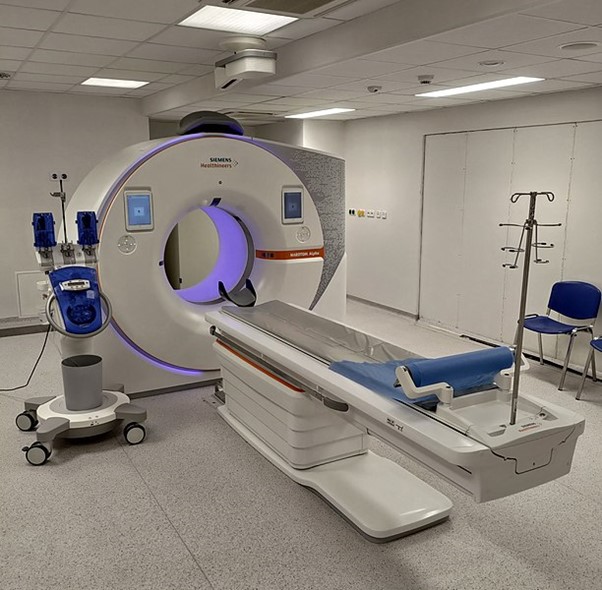Jay Toor of Toronto Canada is an orthopedic surgeon and the Founder of Primus Healthcare Solutions. In the article that follows, Jay Singh Toor explains some of the recent news related to CT scan developments, new use cases, and outcomes.
Computed Tomography can pinpoint diseases and injuries with jaw-dropping precision. Its 3D imagery of bones and soft tissues continues to improve with ever-changing, advanced technology.
Now researchers are turning toward CT scans as a tool to refine estimates of assigned sex using ancestry skulls according to Jay Toor of Toronto Canada.
Boston University School of Medicine researchers are proposing using 3D CT scans that are volume-rendered to estimate a skeleton’s assigned sex at birth. The approach could help forensic anthropologists make a more informed and accurate biological profile of a skeleton.
Traditionally, Jay Toor of Toronto Canada says such a profile is developed using estimates of age, stature, assigned sex, and sometimes population affinity or ancestry. Some of the methods are outdated or not well-understood. Sometimes they reinforce a biological race concept used in identification efforts that have been debunked.
BUSM says that using CT scans to determine assigned sex at birth will make biological profiles more population inclusive. In addition, using CD-VR CT skill images may aid in the ongoing study of skeletal variation among ancestral humans and update estimated methods that are ancestry-based, according to Jay Toor.
Study: CTs Show Antithrombotic Therapy Not Linked to Intracranial Hemorrhage
A study led by the University of Massachusetts Medical Center shows that antithrombotic therapy is not linked to higher incidents on CT scans of traumatic intracranial hemorrhage.
Jay Toor says the study used 1,630 patients who received head CTs to help treated a ground-level fall. The CT scans were then reviewed for characteristics of traumatic intracranial hemorrhage, followed by a review of follow-up CT scans.
The CT scan indicators of intracranial hemorrhage were shown to be not significantly different between those on antithrombotic therapy and those not on the therapy. However, Jay Toor of Toronto Canada explains that the CT scans showed that hematoma expansion was more common for those receiving the therapy.
CT screenings Connected to Earlier Lung Cancer Diagnosis, Survival Rates
Low-dose CT scans used to screen high-risk populations result in both identifying the early stages of lung cancer and reducing the number of deaths linked to the disease, according to a new study.
Jay Toor reports that the study led by United States researchers and published in The BMJ shows that CT scans lead to a 3.9% increase in early non-small cell lung cancer detection, as well as a nearly 12% increase in median survival over a four-year period, from 2014 1o 2018. During that time, early detection of the disease led saved over 10,000 lives.
In 2013, CT lung cancer screenings were introduced in the United States for high-risk individuals. Lung cancer is one of the world’s most deadly cancers, mostly because cases are not identified and diagnosed early.
OmniTom Elite Earns Clearance for Photon Technology
NeuroLogica Corp has announced that its OmniTom Elite just received clearance for integration of Photon Counting Detector-based technology.
Jay Toor explains that photon counting is considered an innovative advancement in CT technology that organizes the collection of different X-ray energies after going through the scan field. NeuroLogica is behind the first single-detector photon-counting CT scanner to receive 510(k) clearance from the U.S. Food and Drug Administration.
An X-ray paired with a photon-counting detector can yield numerous sets of CT data generated at the same time. It also showcases CT data within multiple bands of energy. Jay Singh Toor explains that leads to more accurate detection and images of everything from blood clots and bones to hemorrhages.
Computed Tomography Features Can Differentiate between COPD, Asthma
Jay Toor of Toronto Canada reports that a study published in the European Respiratory Journal finds that seven CT features can differentiate between chronic obstructive pulmonary disease and asthma with moderate to high accuracy rates.
Researchers in Germany aimed to pinpoint the best set of CT features to make the differentiation aided by machine learning. Among the findings: CT emphysema was determined to be an important feature that indicated COPD rather than asthma.
CT Scans and Prostate Cancer
Jay Toor explains using a prostate-specific membrane antigen alongside computed tomography guided by positron emission shows promise in identifying men with prostate cancer who may not need pelvis lymph node dissection or PLND.
Investigators found that 30% of prostate cancer patients have lymph node metastasis using the extended PLND approach. This means that PLNDs may be avoidable in 70% of cases. The study reviewed 27 studies of over 2,800 men who had recently been diagnosed with prostate cancer.
There was an 84% accuracy rate of diagnosing PSMA PET/CT among the patients.
Negative CT/PET Scan Tied to Longer Multiple Myeloma Survival
Those recently diagnosed with multiple myeloma who received a negative PET/CT scan at six months are more likely to enjoy a prolonged survival time until the next treatment, according to a study published in Blood Advances.
Jay Toor of Toronto Canada says the study looks at 195 patients who had been newly diagnosed with the disease and found that the median prolonged time to the next treatment was much higher for those with a negative scan compared to a positive scan. Researchers noted that a CT/PET scan may be integrated into regular post-treatment evaluations.








